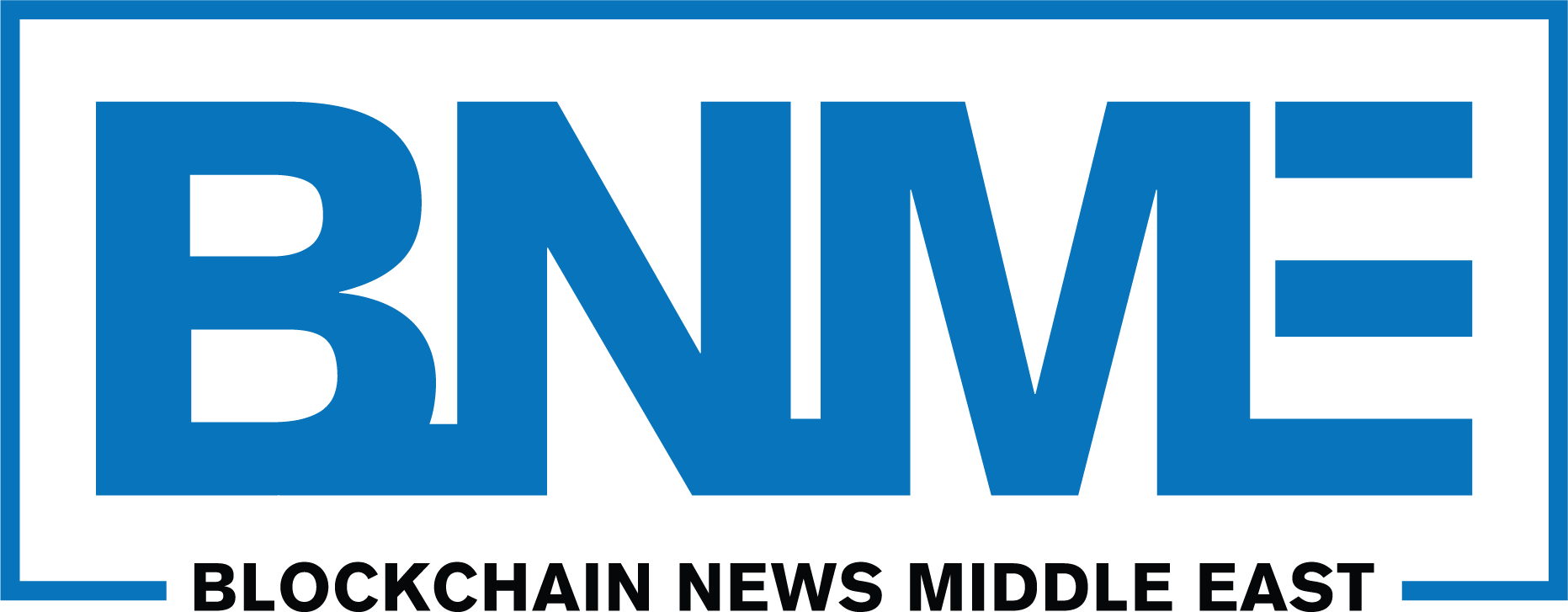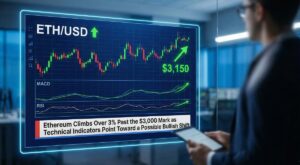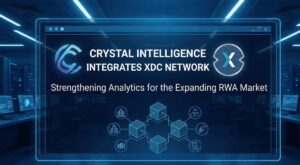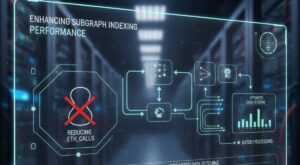Ant Group, the financial technology giant founded by Jack Ma, is taking a bold step into the intersection of blockchain and clean energy. Its subsidiary, Ant Digital Technologies, has launched one of the world’s largest blockchain-based initiatives for the energy sector, connecting more than 60 billion yuan ($8.4 billion) worth of energy assets—including wind turbines, solar panels, and other generation equipment—to its proprietary AntChain platform.
This initiative represents one of the most ambitious efforts yet to apply blockchain to the management of national energy infrastructure. By creating a transparent, decentralized system for monitoring and financing power generation, Ant Group is positioning itself at the forefront of both digital finance and renewable energy development.
Building a Blockchain-Powered Energy Grid
At the heart of the project is AntChain, a blockchain infrastructure designed to improve transparency, efficiency, and reliability in the energy market. More than 15 million devices are already linked to the system, ranging from wind and solar installations to other power-generating assets.
The platform serves as a real-time ledger, recording power output, tracking outages, and ensuring that data cannot be altered retroactively. This immutable record is critical for maintaining grid stability, especially as China accelerates its transition toward renewable sources of energy.
By deploying blockchain in this way, Ant Digital is not only providing a more accurate snapshot of energy production but also creating a foundation for smarter energy management across China.
Tokenization: Financing Renewable Projects in a New Way
One of the most innovative elements of Ant Digital’s plan is the tokenization of energy assets. The company has begun issuing digital tokens that represent fractional ownership or revenue rights from renewable projects. These tokens can be sold directly to investors, bypassing banks and underwriters, which often add complexity and cost to project financing.
Already, Ant Digital has demonstrated the effectiveness of this model. It recently raised 300 million yuan ($42 million) to fund three renewable projects through token issuance. This method not only speeds up the fundraising process but also lowers costs, giving project developers more direct access to capital.
The tokenization strategy reflects a broader global trend toward digitizing real-world assets. For Ant Group, it also signals a strategic effort to democratize investment in clean energy by allowing a wider pool of investors—beyond traditional financial institutions—to participate in energy markets.
Proven Successes and Future Ambitions
Ant Digital’s foray into blockchain-enabled energy finance is not without precedent. The company previously worked with Longshine Technology Group, a Shenzhen-listed energy firm, to raise 100 million yuan by linking 9,000 charging units to AntChain. Similarly, it connected photovoltaic assets from GCL Energy Technology to the blockchain, enabling the company to secure 200 million yuan in financing.
These early successes highlight the potential of blockchain in the energy sector and lay the groundwork for broader adoption. Executives at Ant Digital are now considering extending tokenized energy assets to offshore exchanges, a move that could significantly enhance liquidity. Such expansion, however, will depend on the regulatory environment in international markets.
A Growing Global Trend
While Ant Group’s initiative is one of the most advanced in scale, tokenization of energy assets is emerging worldwide. In Europe and the U.S., regulators are beginning to develop clearer frameworks for digital assets, creating conditions for blockchain-based financing models to take hold.
Companies like Securitize have already brought equities and bonds onto blockchain platforms, while RealT has enabled fractional ownership of real estate. Energy is quickly becoming the next frontier, as demand for transparent, cost-efficient funding mechanisms aligns with the urgent global push toward renewable energy.
If widely adopted, blockchain could help solve one of the most persistent challenges in the clean energy transition: access to affordable capital for large-scale projects. Ant Group’s model offers a template for how technology can bridge that gap.
Ant Group’s Strategic Shift
This ambitious energy initiative also reflects a broader pivot in Ant Group’s corporate strategy. Since Chinese regulators halted its record-breaking IPO in 2020 and imposed restrictions on its online lending operations, the company has shifted its focus toward cross-border services, enterprise solutions, and blockchain technology.
Ant’s Whale blockchain already processes a significant share of the $1 trillion that flows through its global payments platform annually. The firm is also pursuing stablecoin licenses in financial hubs such as Singapore and Hong Kong. Together, these moves signal a push to diversify beyond China’s domestic market and build influence in international financial ecosystems.
By linking blockchain innovation with renewable energy, Ant Group is not just responding to regulatory pressures but actively shaping new growth areas in sustainable technology and global finance.
A Blueprint for the Future of Energy
Ant Group’s latest project underscores how blockchain and tokenization could reshape the way energy is produced, tracked, and financed. By connecting billions of dollars’ worth of assets to AntChain, the company has created a scalable, decentralized system that combines operational transparency with innovative financing.
As global demand for renewable energy intensifies, this model could serve as a blueprint for other regions and markets. By democratizing access to energy project financing, reducing costs, and improving grid efficiency, Ant Digital’s initiative may well mark a turning point for how the world powers its future.
At a time when energy transition is both a technological and financial challenge, Ant Group’s blockchain experiment demonstrates the powerful role digital infrastructure can play in building sustainable economies.




























